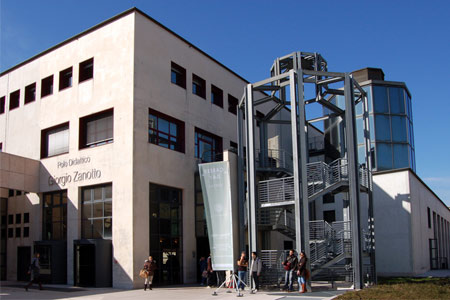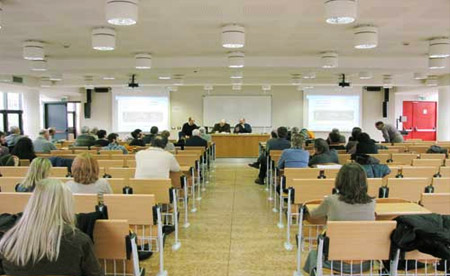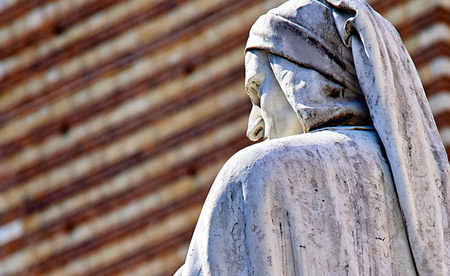Learning outcomes
The teaching of contemporary art history examines the historical-artistic path from the end of ' 700 - when taking the space revolution moves made by Turner as part of romanticism, which gives life to the contemporary space - until the end of the ' 900, which states the poetics of Postmodernism. Covers two centuries of research and artistic issues that are examined through a careful reading of the works together with a wide survey on cultural contexts, aware that the art history is composed of two inseparable elements and also important, the art and the story: special paths must always be placed in the context where you embody for finding the right combination of individual contributions and general panorama.
The study of contemporary art history is performed on two tracks, autonomous but linked: on the one hand, the analysis of artists, movements and situations on the specific poetic style, and continued interweaving between the individual and the context size; on the other hand, the investigation of the relationships that bind the historic path to the various fields of culture such as literature, philosophy, science, cinema, media, according to the principle of communicating vessels at the cultural level. In this way we achieve the tools to understand the connection between artistic research and the time in which it exerts, overview of the moment, of the period, and developing a synoptic knowledge that allows you to understand more thoroughly the reasons cultural and artistic metabolism.
Training objectives: Get into complex joints in expressing artistic research, according to the method of homologies between art and literature, philosophy, science, technology, customs, etc., in relation to art-historical contexts overview and the many cultural interpretations open to art, culture, society to the contemporary world. Analyze poetic lyrics written by historians, artists and deepen the work of living artists whose work witnesses the multifaceted wealth of present.
1 section: Giorgio Morandi: the landscape
The course intends to focus, within the work of Giorgio Morandi (1890-1964), the landscape theme, an important source of inspiration for the artist, who is accompanied by that of the still life in a pair of rare expressive efficacy.
Bibliography:
F. Arcangeli, Morandi (1964), Einaudi, Turin, 1981
R. Pasini, Morandi (1989), CLUEB, Bologna, 2011
2 section: The artwork of Alberto Giacometti
This section examines, fifty years after his disappearance, the artistic research of Alberto Giacometti (1901-1966), one of the most fascinating and restless figures of ‘900, whose work is distinguished by the shape of the "remove" in the sense in which "less is more".
Bibliography:
Yves Bonnefoy, Alberto Giacometti, Abscondita, Milan, 2004
Alberto Giacometti, (edited by C. Spadoni), catalogue Loggetta Lombardesca, Ravenna, 2004 (Mazzotta, Milano, 2004)
Elio Grazioli, Giacometti and the minimum, in Idem, Dust in art, Mondadori, Milano, 2004
Teaching mode: We recommend students to attend classes and if not attending to provide notes. However you can prepare the exam just about program texts.
Within the Courses will take place visits to museums and exhibitions-in order to integrate the preparation or to promote the knowledge of artistic research-, seminars, tutorials, presentations of books.
From the iconographic point of view, the examination test focuses on the artists and their works and views present in texts, which the student must know.
The exam consists of a written test. The main valuation parameters are: 1) actual interest and level of preparation; 2) mastery of the field of study; 3) argumentative capacity; 4) expressive quality.
Please note that texts with copyright cannot be reproduced by any means, including the photocopy, which has not been authorized, and in any case not exceeding 15%. Please note that the purchase of texts is free and can be replaced by loan librarian.
Reception mode
There are two types of offers: front reception and telematics. The use of e-mail has become in recent years a very beloved by students, especially those who have difficulties to go to the front, those who do not attend classes, those who are in Erasmus etc., and then becomes necessary a useful formalization. Therefore, in addition to the front reception, for which it is advisable to book via email, the electronic receipt shall be established, for mail that is believed to have caused a response (if the e-mail address is accepted and the student has sent the mail to the right address: please then take note: pasini.roberto@univr.it ).
Thesis
Students who wish to graduate, for both the bachelor's and master's degree, must according to common sense have in contemporary art history exams an average justifying a thesis in this matter. To carry out the thesis, is an iteration support practice, for both the bachelor and master degree (for students who have graduated with a bachelor's degree in another field). The student is invited to submit to the Professor three arguments, and then the one in which thesis will be carried out will be choiced.
Regardless of the field in which you are graduating, students are required to submit a thesis in Secretariat only after having supported all exams. One cannot take account of any requests made by students who have not respected this rule elementary fairness.







